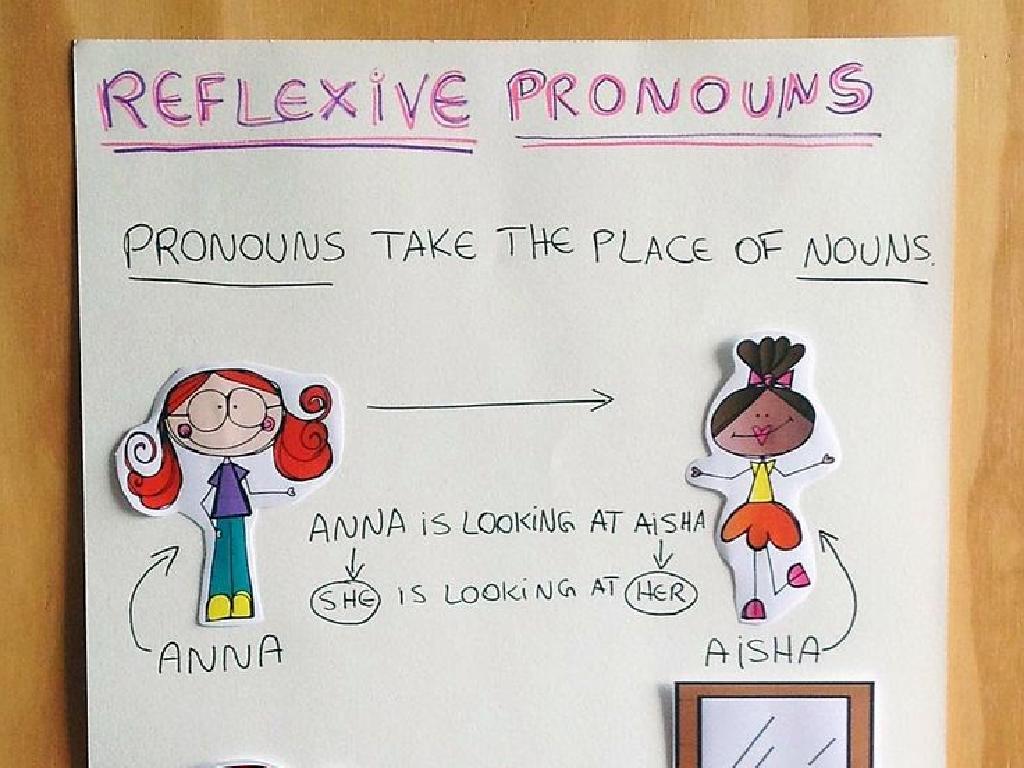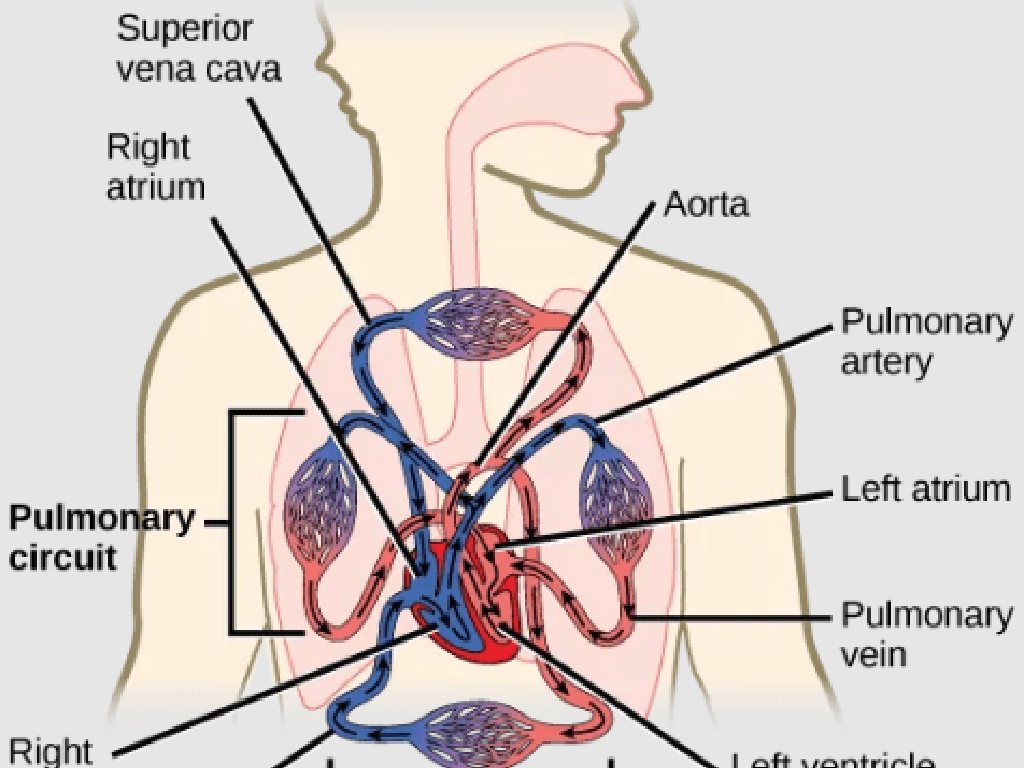Plant Cell Diagrams: Label Parts
Subject: Science
Grade: Eighth grade
Topic: Cells
Please LOG IN to download the presentation. Access is available to registered users only.
View More Content
Exploring Plant Cells: The Basics
– Cells: Life’s foundational units
– Plant vs. Animal Cells: Key differences
– Plant cells have a cell wall and chloroplasts, unlike animal cells.
– Focus: Plant Cell Diagrams
– We’ll learn to label each part of a plant cell and its function.
– Importance of cell part identification
|
This slide introduces students to the concept of cells as the basic building blocks of all living organisms. Highlight the unique characteristics that differentiate plant cells from animal cells, such as the presence of a cell wall and chloroplasts in plant cells. The main focus of today’s lesson is to understand and identify the various parts of a plant cell through diagrams. Emphasize the importance of recognizing each cell component and its role in the life of the plant. Encourage students to think about how these differences might affect the functions of plant cells compared to animal cells. This foundational knowledge will be crucial for their understanding of more complex biological processes.
Exploring Plant Cells
– Define plant cells
Basic unit of life in plants, containing organelles within a cell wall.
– Main parts of a plant cell
Includes nucleus, chloroplasts, cell wall, and vacuoles among others.
– Plant cells’ role in photosynthesis
Chloroplasts in plant cells capture sunlight to produce food, a process called photosynthesis.
– Significance in ecosystems
|
This slide introduces the concept of plant cells, which are the fundamental building blocks of all plant life. Emphasize the unique features of plant cells, such as the cell wall and chloroplasts, which distinguish them from animal cells. Highlight the main parts of a plant cell and their functions, ensuring to explain the role of chloroplasts in photosynthesis. Discuss the importance of plant cells in sustaining not only the plants themselves but also the ecosystems they are part of, as they produce oxygen and form the base of food chains.
Exploring Plant Cell Components
– Cell Wall: Support and Protection
– A rigid layer that guards and maintains the cell’s shape.
– Cell Membrane: Gatekeeper of the Cell
– Semi-permeable membrane managing substance movement.
– Nucleus: Command Center
– Contains DNA, orchestrating cell functions and growth.
– Chloroplasts: Photosynthesis Sites
– Where sunlight is converted into energy for the plant.
|
This slide introduces students to the fundamental parts of a plant cell, each with a specific function. The cell wall provides structural support and protection, distinguishing plant cells from animal cells. The cell membrane controls the entry and exit of substances, maintaining homeostasis. The nucleus, containing genetic material, directs all cell activities. Chloroplasts are unique to plant cells, where photosynthesis occurs, converting light energy into chemical energy. Encourage students to draw and label each part in their notebooks and to think of analogies for each component’s function.
More Plant Cell Parts: Functions and Roles
– Mitochondria: Cell’s energy producers
– Converts glucose into ATP, the cell’s usable energy form.
– Vacuoles: Storage compartments
– Stores nutrients, waste products, and helps in plant growth.
– Endoplasmic Reticulum & Golgi: Processing & distribution
– ER processes molecules; Golgi packages & ships them out.
– Ribosomes: Sites of protein synthesis
– Ribosomes read RNA to assemble amino acids into proteins.
|
This slide delves into the specific functions of various organelles within the plant cell. Mitochondria are known as the powerhouse of the cell, converting nutrients into ATP, which is essential for cellular processes. Vacuoles act as storage centers, holding materials that the cell may need to survive, grow, and dispose of waste. The endoplasmic reticulum (ER) and Golgi apparatus work together to produce, process, and transport proteins and other important molecules. Ribosomes are the molecular machines that synthesize proteins, which are crucial for the structure and function of the cell. Encourage students to draw parallels between these organelles and parts of a factory or city to better understand their roles.
Plant Cell vs. Animal Cell: Unique Features
– Identify plant cell features
– Plant cells have a cell wall, chloroplasts, and large vacuoles
– Compare with animal cells
– Animal cells lack a cell wall and chloroplasts but have centrioles
– Role of chloroplasts
– Chloroplasts enable photosynthesis, producing food for the plant
– Significance of cell walls
– Cell walls provide structure and protection for plant cells
|
This slide aims to highlight the differences between plant and animal cells, focusing on the unique features of plant cells. Students should understand that while both cell types share many common structures, plant cells have distinctive components such as chloroplasts, which are crucial for photosynthesis, and cell walls, which offer rigidity and support. Emphasize the importance of these features in the life of a plant, and how they differentiate plant cells from animal cells. Encourage students to think about the implications of these differences in terms of cellular functions and overall plant health.
Labeling a Plant Cell Diagram
– Step-by-step labeling guide
– Follow a structured approach to label each part of the plant cell.
– Interactive labeling example
– We’ll label a cell diagram together in class for better understanding.
– Tips to remember part functions
– Use mnemonics and associations to memorize the functions of cell parts.
– Class activity: Label a cell!
|
Begin the lesson with a brief review of the plant cell and its importance. Introduce the step-by-step guide, explaining each part of the cell as you go. For the interactive example, use a digital tool or a large diagram to label the parts together with the class. Share mnemonic devices to help students remember the functions of each part, such as ‘The Mighty Chloroplasts Harness Sunlight’ for chloroplasts’ role in photosynthesis. Conclude with a hands-on activity where students label their own diagrams, reinforcing the lesson. Provide feedback and answer any questions to ensure comprehension.
Class Activity: Create Your Own 3D Plant Cell Model
– Gather materials for 3D cell model
– Follow the step-by-step instructions
– Use the provided list to collect clay, styrofoam, paint, etc.
– Work in groups to build your model
– Collaborate and assign roles for efficiency
– Discuss the function of each cell part
– Share what each part does as you add it to your model
|
This hands-on activity is designed to help students understand the structure and function of plant cell components by creating a 3D model. Provide a list of materials such as clay, styrofoam balls, pipe cleaners, and paint for students to use. Offer clear, step-by-step instructions for constructing the model, ensuring that each part of the cell is represented. Encourage teamwork by having students divide into groups, which will foster collaboration and discussion. As they build, students should discuss the function of each part of the cell, reinforcing their learning. After the activity, each group can present their model to the class, explaining the role of each cell component. This will help solidify their understanding and provide an opportunity for peer learning.
Review and Q&A: Plant Cell Components
– Recap plant cell parts/functions
– Review: nucleus, chloroplasts, cell wall, and more
– Open floor for questions
– Discuss plant cells’ biology role
– Understanding cells aids in grasping complex biological processes
– Encourage curiosity and participation
– Questions deepen comprehension and engagement
|
This slide aims to consolidate the students’ knowledge of plant cell anatomy and its relevance to biology. Begin with a brief recap of the main parts of a plant cell, such as the nucleus, chloroplasts, mitochondria, and cell wall, and their respective functions. Emphasize the role of the cell as the basic unit of life and how each component contributes to the cell’s overall function. After the recap, invite students to ask any lingering questions they might have, fostering an interactive environment. Highlight the significance of understanding plant cells as a foundation for more advanced topics in biology, such as photosynthesis, respiration, and energy conversion. Encourage students to be inquisitive and participate actively in the discussion, as this will help them and their peers to better understand the subject matter.
Homework: Dive into Plant Cell Organelles
– Complete cell labeling worksheet
– Research an organelle thoroughly
– Choose an organelle, like the chloroplast or mitochondrion
– Prepare a short organelle presentation
– Create a 2-3 minute talk about your organelle’s function
– Bring plant cell models to class
|
This homework assignment is designed to reinforce the students’ understanding of plant cell structure and function. By completing the labeling worksheet, students will become more familiar with the physical layout of plant cells. The in-depth research on a specific organelle will allow students to explore the complexities and importance of these cell components, such as chloroplasts or mitochondria. Encourage students to use credible sources for their research. The short presentation will help them practice their public speaking skills and share knowledge with peers. Lastly, remind students to bring their plant cell models for a hands-on presentation next class, which will aid in visual learning and peer engagement.






